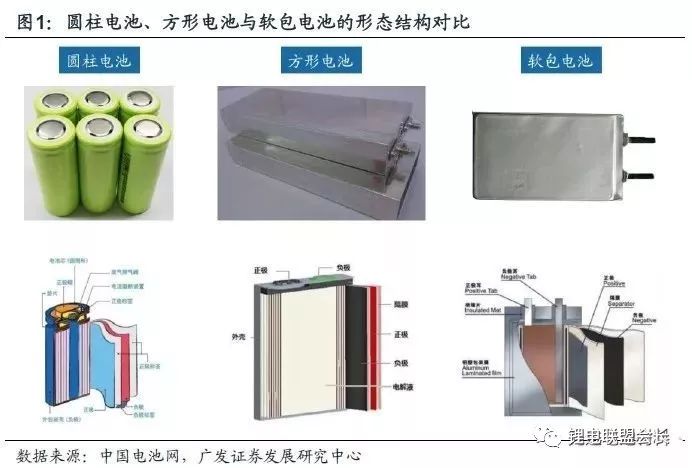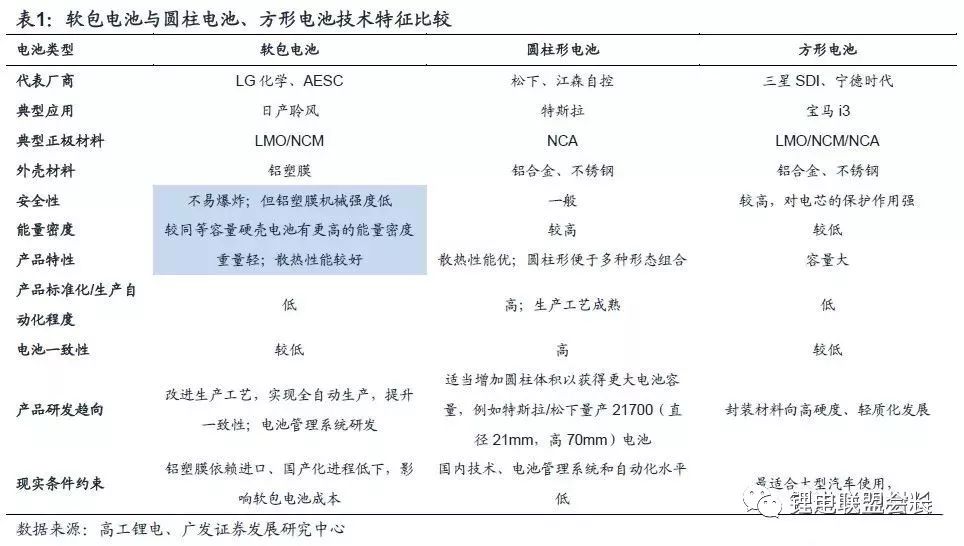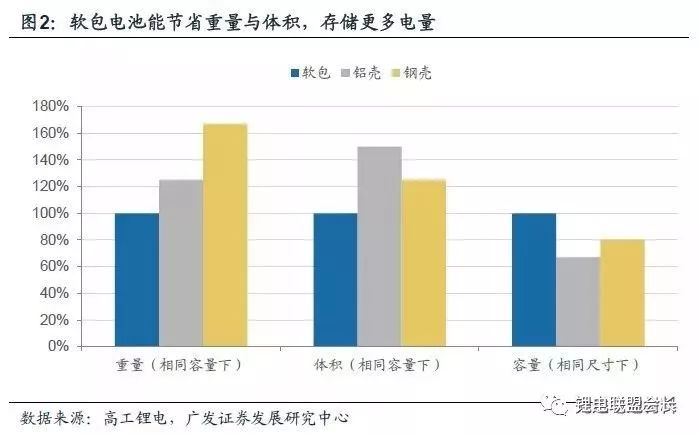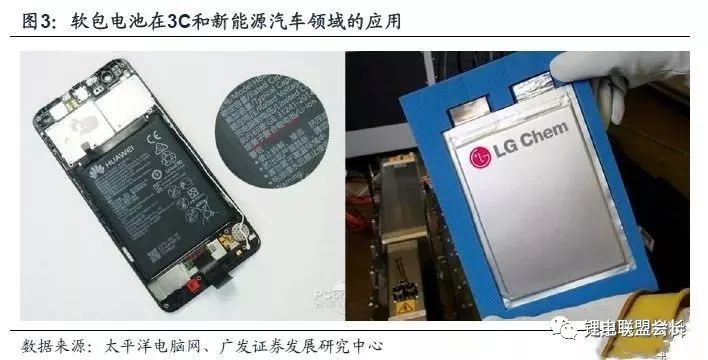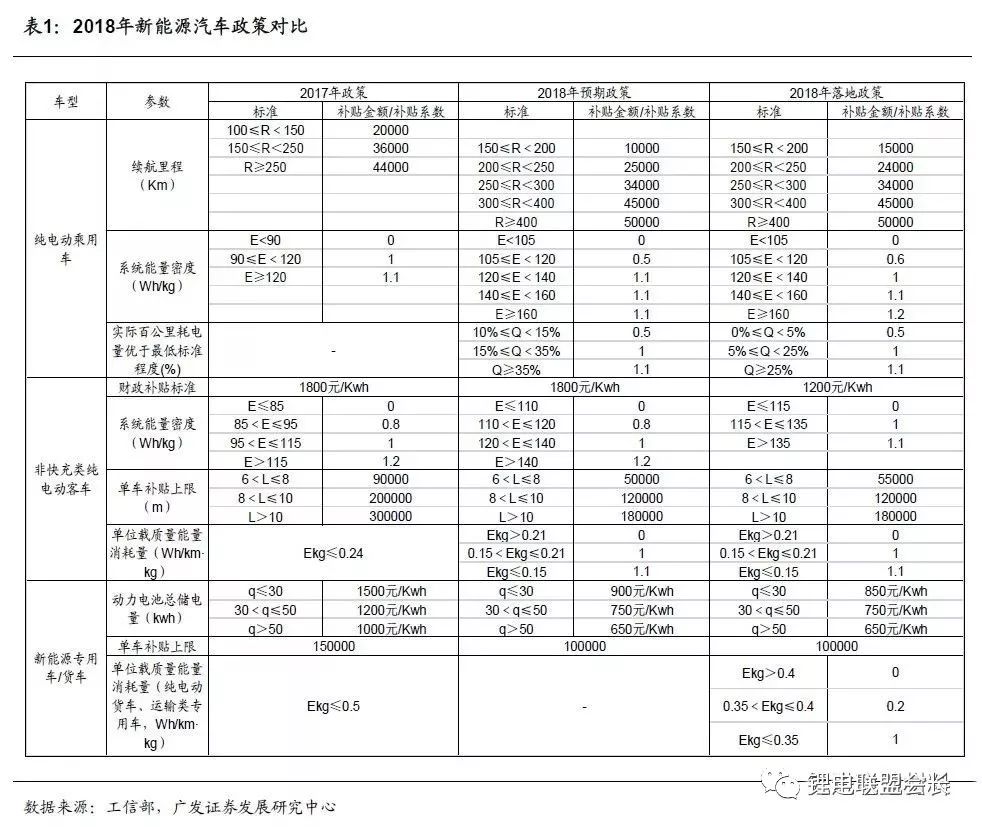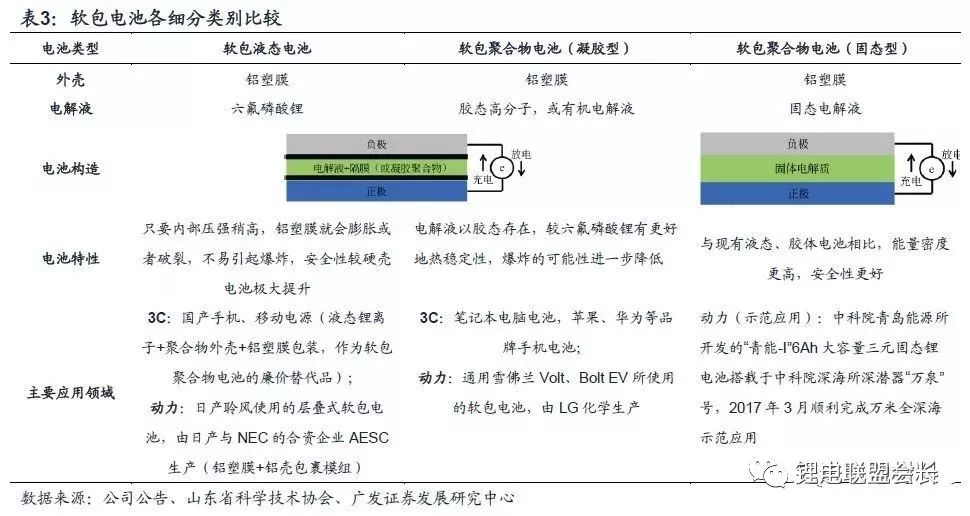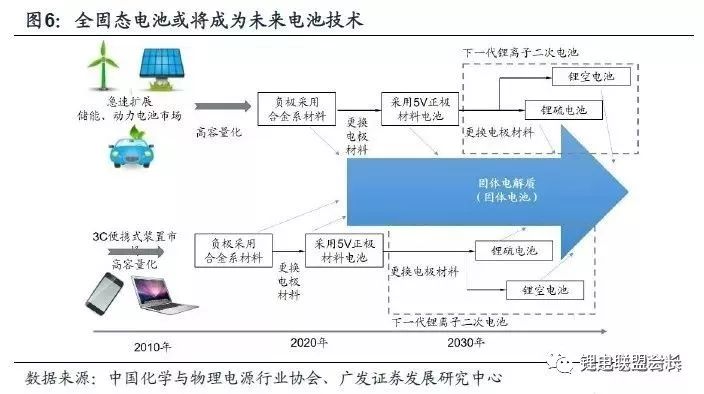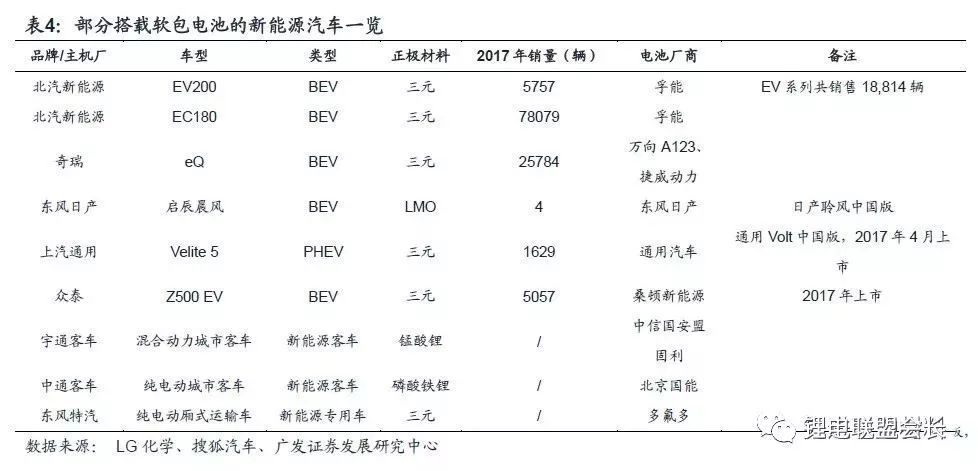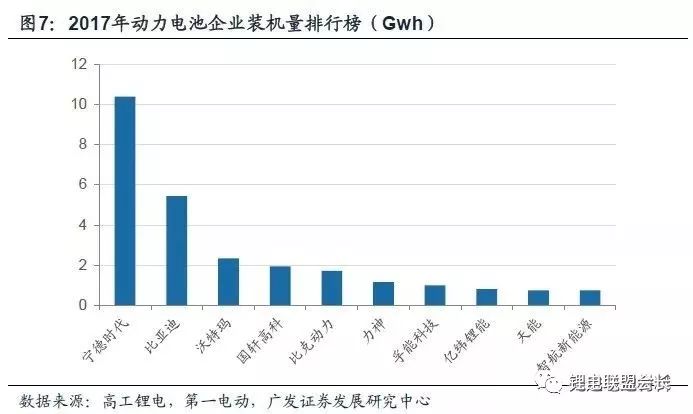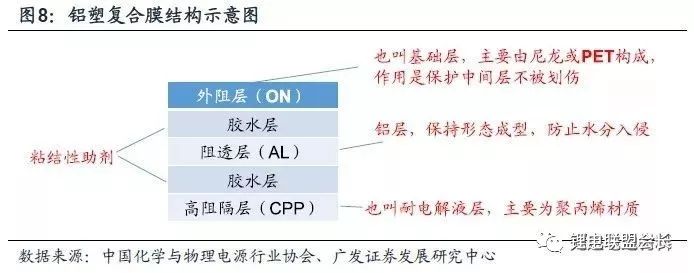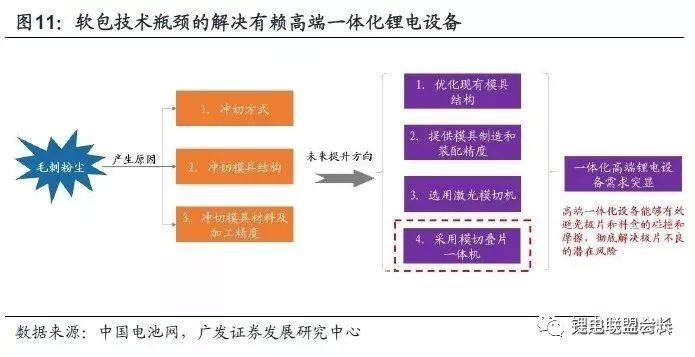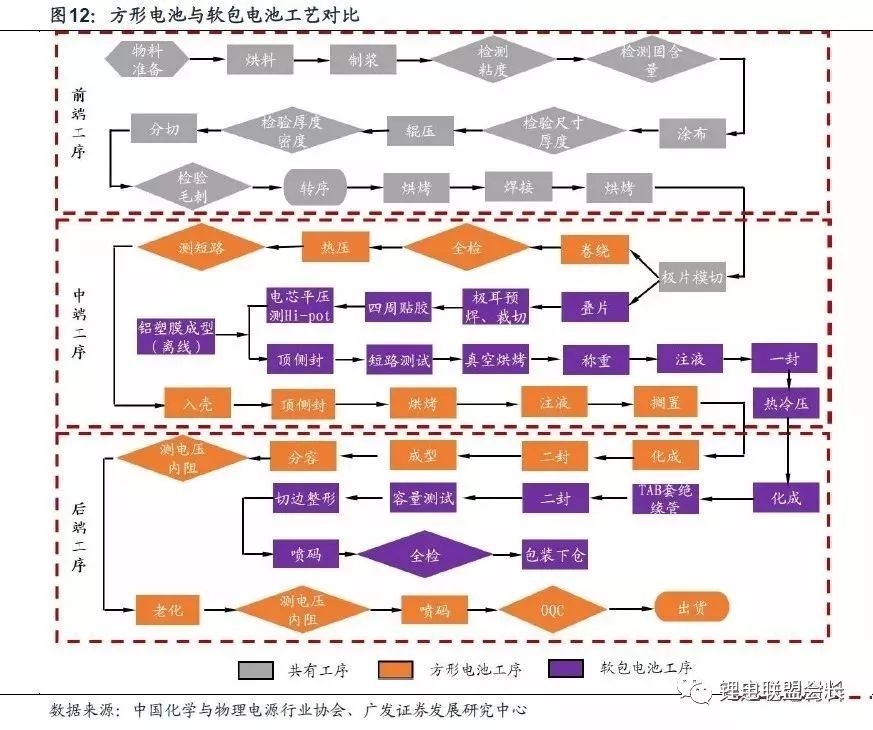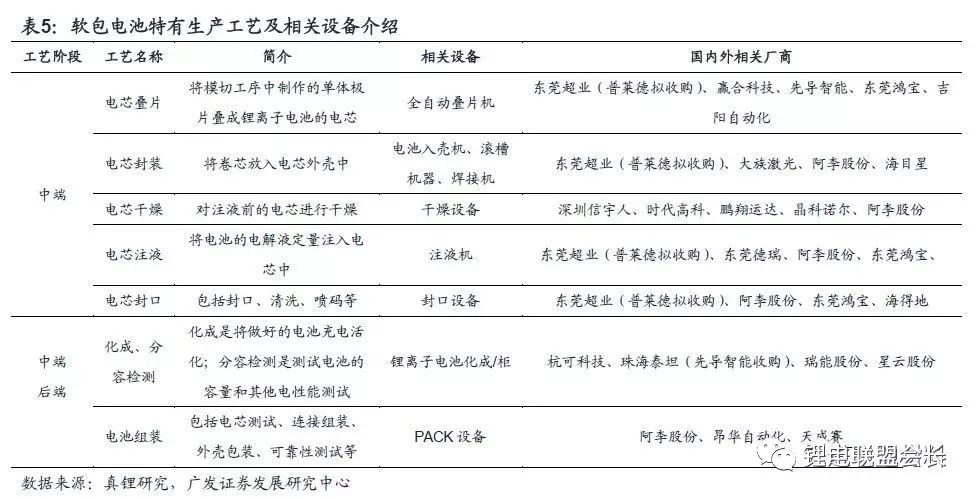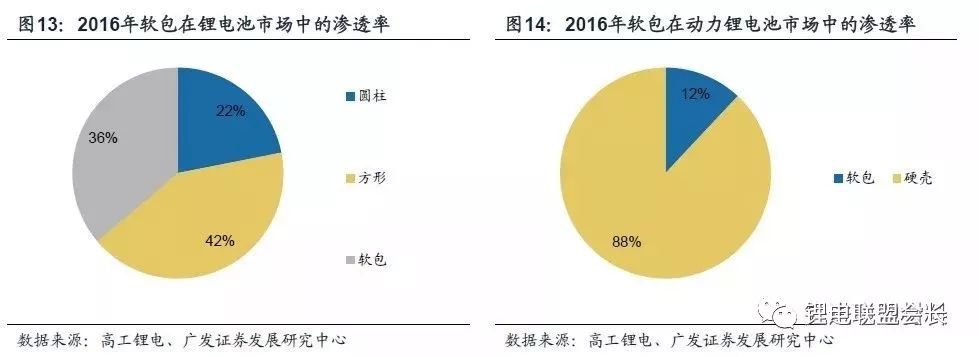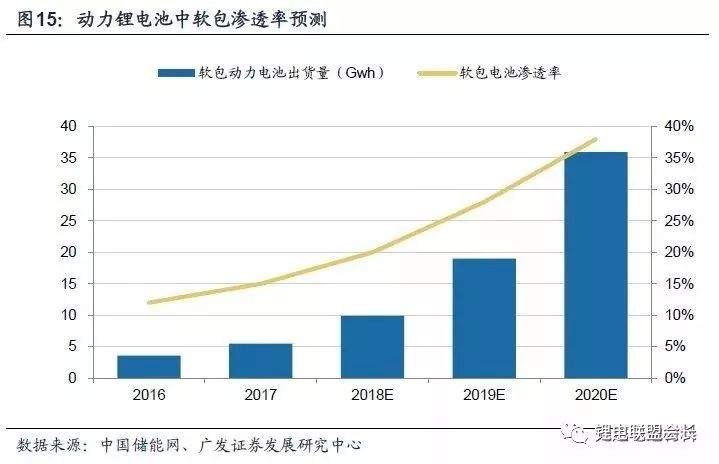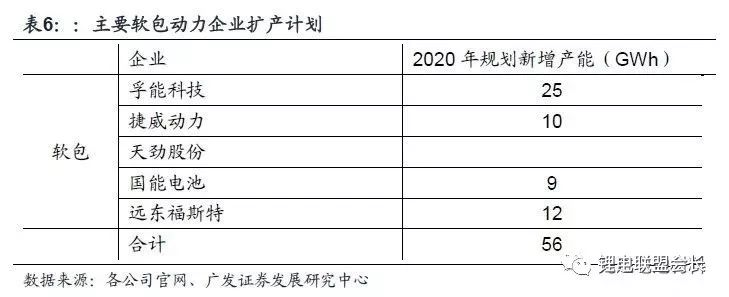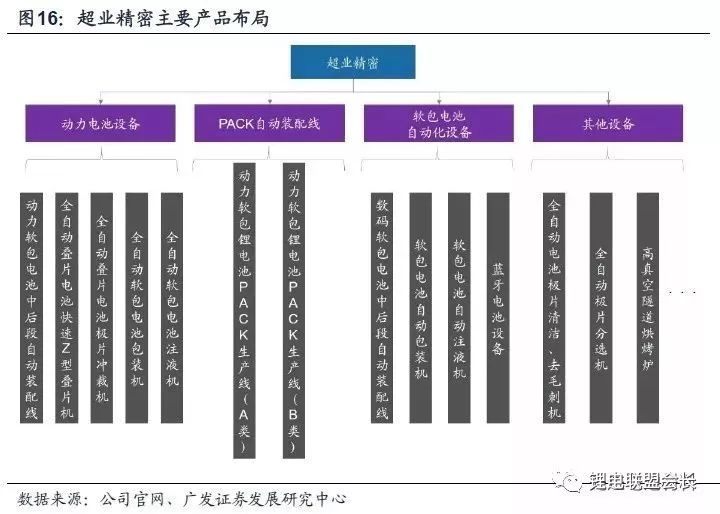At the beginning of the 18th year, the new version of the subsidy policy was announced, which puts higher requirements on the energy density of the battery; the special research on the power battery of the Ministry of Science and Technology has made a substantial breakthrough. The Ningde era, Lishen and Guoxuan all chose to adopt the soft package route; Announced the proposed acquisition of soft package automation equipment enterprise super industry precision. Three incidents revealed that deep-seated changes in the industry are taking place. Soft bag technology, as an important means of lightweighting and high-energy battery, is expected to continue to increase penetration rate in new capacity expansion, thereby achieving investment growth faster than the industry expansion scale. The difference in the process between the soft pack battery and the square battery brings about an increase in the demand for high-end lamination equipment and liquid injection and packaging equipment in the middle and rear sections. Newly added markets Due to the vast space, lithium-ion equipment companies with a certain soft-package technology base are expected to accelerate the layout. Refer to the body of the report for details. Core view There are advantages and disadvantages in each of the three forms, and the energy density performance of the soft pack battery is outstanding. Compared with hard-shell batteries (square and cylindrical), the soft-pack battery has the characteristics of flexible design, light weight, small internal resistance, low explosion resistance, high cycle number and high energy density, which can improve the energy of the power battery in the prior art. Density, further narrowing the cruising range and the gap between fuel vehicles. In the short term, flexible packaging, as a means of lightweighting and high-energy battery, will occupy an incremental market at a higher proportion. In the long run, all solid-state batteries need to adopt soft-package technology to point the direction to the industry. The new energy vehicle policy has released a signal that boosts battery performance and increases energy density. With the increasing subsidy threshold, flexible packaging can help more battery companies to increase energy density and product competitiveness, and future soft pack technology will occupy a place in the incremental market. Looking at the demand for lithium battery equipment from the evolution of battery form According to the China Energy Storage Network, the penetration rate of soft pack batteries in power batteries is only 12-15%. On the one hand, the current production process is still immature, the degree of standardization is low, and the battery consistency is poor. On the other hand, The main raw material aluminum plastic film relies on imports leading to a relatively high unit cost. However, these development bottlenecks are expected to be eliminated in the future through production scale, automation, enhanced battery management systems, and improved quality of aluminum-plastic films. In particular, the lamination process used in the soft-packed battery core places high demands on the control of the production process, and also highlights the important role of the high-end integrated equipment in the middle and rear sections. Soft pack equipment has a wide space, and mainstream manufacturers have laid out The power lithium battery production equipment is closely related to the lithium battery process. The whole production process can be roughly divided into three stages: pole piece production (front end), battery core production (middle end) and battery assembly (back end). The process of soft pack battery and square battery is basically the same in the front end of the production, such as stirring, coating, rolling, etc. The process difference is mainly concentrated in the middle and back end of the power battery production. The core difference lies in two aspects: 1) the soft-pack battery cell adopts the lamination process, and the square battery usually adopts the winding process; 2) the aluminum plastic film is used as the soft-pack battery packaging material, wherein the back-end liquid injection, packaging and other processes and squares There is a big difference in the battery. The huge market space of the back-end lithium battery equipment related to the soft pack battery attracts the lithium battery equipment faucet to accelerate the layout of the soft pack equipment field. On March 13, 2018, Yan Tailai announced the announcement of the suspension of major asset restructuring and suspension, saying that the underlying assets to be acquired were Dongguan Chaoye Precision Equipment Co., Ltd. Chaoye Precision is the leading supplier of soft pack battery solutions in China. Investment suggestion: As the new energy vehicle subsidy standard puts higher requirements on battery energy density, soft bag technology is an important means for battery lightweighting and high energy, and it is expected to continue to increase penetration rate in new capacity, thus achieving higher than industry expansion. The scale of investment growth. The difference in the process between the soft pack battery and the square battery brings about an increase in the demand for high-end lamination equipment and liquid injection and packaging equipment in the middle and rear sections. Newly added markets Due to the vast space, lithium-ion equipment companies with a certain soft-package technology base are expected to accelerate the layout. At present, relevant listed companies include Qi Tailai, Wintech, and Pioneer Intelligence. Risk warning: sales of new energy vehicles were lower than expected; product prices fell sharply; soft-pack power battery technology was lower than expected. First, the battery form is three-points, the potential of the soft pack battery is huge. 1.1 There are advantages and disadvantages in each of the three forms, and the energy density of the soft pack battery is outstanding. At present, the power lithium battery can be divided into three types according to the difference of the package form: a cylinder, a square and a soft package, wherein the cylinder and the square are also collectively referred to as a hard shell battery. The internal components of the three types of power lithium batteries are not much different. The core difference is that the cylindrical and square batteries mainly use metal materials as the outer casing, while the soft-pack lithium batteries use aluminum plastic film as the package outer casing. Due to the different packaging materials and structures, the three batteries have different technical performances, each with certain advantages and disadvantages. Cylindrical battery: The production process is mature and the product yield is high. Benefiting from mature technology, cylindrical lithium battery PACK cost is lower, battery product yield is higher; and heat dissipation performance is better than square battery; cylindrical battery can be combined in various forms according to specific needs, which is convenient for new energy vehicle use space. Full layout. At present, China, Japan, Korea, and the United States have mature cylindrical battery manufacturers, such as SANYO, SONY, and Wanxiang A123. However, the cylindrical battery is usually packaged in a metal steel shell or an aluminum shell, and the weight is relatively large, resulting in a relatively low specific energy of the battery pack. Square battery: There are many models and the process is difficult to unify. The square hard shell battery case is mostly made of aluminum alloy, stainless steel, etc. The inside adopts the winding or lamination process, which is better than the aluminum plastic film battery (ie, soft pack battery), and the safety of the battery core. The cylindrical battery has also been greatly improved. At present, the enterprises that produce square batteries mainly include Ningde Times, Guoxuan Hi-Tech, Samsung SDI, and Lishen. However, since the prismatic battery is usually customized according to the size required by the product, the number of square batteries on the market is numerous, and the process is difficult to unify. For the new energy vehicle power lithium battery that needs to be used in series or in parallel, the standardized production is selected. Cylindrical lithium batteries are more guaranteed in the production process, and have more advantages in terms of safety, and are more replaceable. Soft pack battery: refers to the lithium battery with aluminum plastic film as the outer casing. The penetration rate in the 3C field has exceeded 60%, and it has gradually expanded to the new energy automobile industry. Compared with hard-shell batteries, soft-pack batteries have the characteristics of flexible design, light weight, small internal resistance, low explosion resistance, many cycles, and high energy density. With the rapid development of smart phones and tablets, soft pack batteries have gradually applied to new energy vehicles and energy storage due to their good ductility and high energy density. The biggest advantage of flexible packaging is that it can increase the energy density of the power battery at the current state of the art, and further narrow the gap between the fuel vehicle and the cruising range. According to the statistics of high-tech lithium batteries, the soft pack battery is 20% lighter than the aluminum shell battery of the same capacity, and the capacity is 50% higher than the aluminum battery of the same size. Compared to hard-shell packaging, flexible packaging improves battery safety, reduces battery power consumption, extends service life, and provides design flexibility. The shortcoming of flexible packaging is that the aluminum-plastic film of packaging materials is not as strong as the hard shell, and it is currently dependent on imports and has high cost. Cost and consistency issues become limiting factors for soft pack battery development. The shortcoming of the soft pack battery is that the current production process is still immature, the degree of standardization is low, and the battery consistency is poor. However, these disadvantages will be eliminated in the future through production scale, automation, enhanced battery management systems, and improved quality of aluminum-plastic film. In addition, the soft plastic raw material aluminum film is still imported, and the power battery manufacturer has low acceptance of the domestic aluminum plastic film, which also limits the large-scale development of the soft battery to a certain extent. In the future, with the capacity of domestic enterprises in the field of aluminum plastic film, the subsequent restrictive factors are expected to be resolved. 1.2 The new version of the policy "excellent and retreat", high energy density demand to help soft bag technology development According to the 2018 new energy vehicle subsidy program, the pure electric passenger car with a system energy density above 140Wh/kg has a subsidy premium of 10%, and the pure electric passenger car with a system energy density above 160Wh/kg has a subsidy premium of 20%. The pure electric bus with a system energy density of 135Wh/kg can obtain a subsidy premium of 10%, which increases the subsidy requirements for the energy density of the battery system. As flexible packaging can further increase battery energy density, the development of soft pack batteries is in line with the new policy guidelines. In the medium term, under the background of desubsidization, the industry competition pattern tends to be market-oriented, and the soft-pack battery meets the trend of passenger car's endurance. Under the guidance of the 2013-2016 Pratt & Whitney subsidy policy, the new energy passenger vehicle market has gradually formed. In 2016, the output accounted for about 62% of the total output of new energy vehicles; A00 and A0 vehicles are in new energy passenger vehicles. Half of the production is in the market, and the market cultivation has achieved initial results. Compared with passenger cars and special vehicles, passenger cars have more compact space, higher requirements for energy density and safety, flexible packaging to save weight and weight, improve driving ability, and are not easy to ignite and explode. The best-selling A00 and A0 models of BAIC EC180 and Chery eQ use soft pack batteries. The energy density and safety advantages of flexible packaging are in line with the performance improvement of passenger cars of Class A and Class B. The continuous heavy volume of new energy passenger cars creates space for the development of soft bags. 1.3 Future solid-state batteries are suitable for soft package technology According to the state of the electrolyte material, the soft pack battery can be divided into a soft pack liquid battery and a soft pack polymer battery. The former uses a liquid electrolyte, and the latter uses an electrolyte mainly. The all-solid-state battery with solid substance as electrolyte is still in the demonstration stage, which will further improve the energy density and safety of the power battery. Since the liquid electrolyte is not used, the battery package can use a soft bag. The soft pack liquid battery is widely used in domestic mobile phones and charging treasures. The famous best-selling model Nissan Leaf is loaded with the cascading soft pack liquid battery provided by AESC; the soft pack polymer battery is used for notebook computers and brand mobile phones. In the long run, all solid-state batteries have high energy density and the strongest safety, which is expected to drive the further development of flexible packaging. The all-solid battery replaces the diaphragm and the electrolyte with a solid electrolyte such as a polymer, an oxide or a sulfide to fundamentally solve the battery safety problem; the energy density of the battery cell is expected to increase to 400-500 Wh/kg. All solid-state batteries are still in the research and development stage. BMW, Toyota, Bosch and some domestic companies are actively deploying, and it is expected to become the mainstream battery route in the future. Kolibri of Germany developed a large-capacity polymer solid-state lithium battery for Audi, with a total weight of 300kg and a driving range of 600km. The solid-state battery casing and assembly process are simplified because no liquid is needed, and the soft-package sealing technology suitable for solid-state battery packaging is expected to open up new growth space for soft-pack battery development. We believe that in the short term, flexible packaging, as a means of lightweighting and high-energy batteries, will occupy an incremental market at a higher proportion, and long-term optimistic about the trend of flexible packaging for all solid-state batteries. The new energy vehicle policy has released a signal that boosts battery performance and increases energy density. With the increasing subsidy threshold, flexible packaging can help more battery companies to increase energy density and enhance product competitiveness, and flexible packaging will occupy a place in the incremental market. Second, the trend of expansion has changed, soft pack battery investment plus code 2.1 Star models help the future soft pack battery volume In the domestic market, soft-packed batteries have entered the supply chain of some new energy passenger cars, buses and special-purpose vehicles, and the application prospects continue to be optimistic. BAIC New Energy, Chery and other manufacturers have introduced soft packs in their best-selling models, and Dongfeng Nissan and SAIC-GM have actively promoted the localization of foreign soft-pack models. Soft pack batteries are also used in new energy buses and special vehicles. Yutong Bus, Zhongtong Bus, Dongfeng Special Auto and other leading enterprises have models equipped with soft pack batteries. 2.2 Battery Enterprise Soft Package Capacity Expansion Plan In the top ten of the new energy passenger car power battery installed capacity in 2017, Fu Neng, Tianneng, and Jiewei are all suppliers of ternary soft pack power batteries. These three are all in the forefront of the supply of new energy passenger cars in recent years. Since 2015, with the energy density advantage of the ternary soft pack and the accumulated experience in North America, Fueng has entered the supply system of Beiqi New Energy and became the main supplier. In 2015, in the ranking of shipments, Fu Neng is still unknown. In 2016, the company's shipments reached 341.68MWh, ranking 13th in the industry. In 2017, it continued to expand, with a shipment volume of 1.05GWh, ranking sixth in the industry and third in passenger vehicle matching. On December 20, 2017, Fu Neng also signed a five-year battery bill with BAIC Group to ensure that it continues to occupy a considerable market share. Tianneng is also a battery giant that has entered the supply of new energy passenger cars in recent years. In 2017, Tianneng Sanyuan soft pack electric vehicle power battery is nearly 300MWh. Tianneng's soft-package battery has reached an energy density of 230Wh/kg, and will introduce 250-260Wh/kg at the end of 2018. At present, Tianneng Sanyuan soft pack power battery capacity is 2.5GWh-3GWh, which will be expanded to 8GWh in 2019, and all new capacity will be ternary soft pack route. In addition to the top ten, companies such as Duofuo, Ka Nai New Energy, Chaowei Chuangyuan, Tianjin, and Penghui Energy have already produced and supplied ternary soft pack batteries, making the ternary soft packs relative to square and The cylinder is gradually showing its rise. Third, from the evolution of battery form, see the road to upgrade lithium battery equipment 3.1 Technology and efficiency to find a balance point, each of the three forms of development On January 20, 2018, the 2018 Forum of China Electric Vehicles 100 People's Association, the head of the overall expert group of the National 863 Program Energy Conservation and New Energy Vehicles Major Project, Ouyang Minggao, introduced the research progress of power battery. Among them, CATL, Lishen, Guoxuan Hi-Tech, which are responsible for the new lithium-ion power battery project, have chosen the ternary soft-package technology route, and the energy density has reached 300Wh/kg. However, this can only indicate that the three companies that undertake the national specialization recognize the high energy density characteristics of the ternary soft-package technology route. The actual expansion is still the enterprise's starting point for itself and seeking a balance between technology and efficiency. The soft pack battery has not yet formed the overwhelming advantage of the square battery and the cylindrical battery. There is two aspects: First, the cost problem: the core component of the aluminum plastic film is currently less localized, mainly relying on foreign imports, the cost Higher. The second is the process difficulty: the soft-packed battery core usually adopts the lamination process instead of the winding method. In the process of lamination die-cutting, the traditional metal die-cutting machine often causes burrs on the punched cut surface and easy to drop powder, resulting in the quality of the pole piece. Not good, seriously affecting the safety performance of the finished battery, while the residual dust in the complex use environment, it is easy to cause internal short circuit of the battery, lightly shorten the battery life, and then cause the battery to have safety problems. 3.2 The aluminum plastic film is gradually localized, cracking the cost problem of the soft package route The material properties of aluminum-plastic film are critical to ensure long-term stable operation of the battery. It is the main difference between the soft-pack battery and the cylindrical and square-shaped hard-shell battery. The design and manufacture of aluminum plastic film is considered to be one of the three major technical problems in the lithium battery industry. The aluminum plastic film generally consists of an outer resist layer (nylon), an aluminum layer and a high barrier layer (polypropylene) with a glue layer sandwiched between the two layers. According to the functional use, aluminum plastic film can be divided into two types of power and non-power. The aluminum plastic film used in the former has a thickness of 152 μm, and the latter generally uses an aluminum plastic film having a thickness of 88-123 μm. Relatively speaking, the former has higher technical requirements. The price of aluminum plastic film is still high, mainly due to the existence of production technology barriers, and currently mainly rely on imports, the domestic market is basically a monopoly of Japanese and Korean companies. According to high-tech lithium battery data, the demand for aluminum-plastic film for lithium batteries in China in 2016 (excluding foreign-owned enterprises in China, except for ATL) was 95 million m2, a year-on-year increase of 44%; among them, domestic production reached 4.94 million m2, domestically produced. The rate is about 5%. Japan's DNP and Showa Denko account for nearly 70% of the total. In 2016, Xinlun Technology acquired the production, manufacturing and sales of aluminum-plastic film under the Japanese letterpress printing in July 2016, and its production is still completed in Japan. 3.3 The lamination process is difficult, and the demand for high-end production equipment is highlighted. Soft-packed cells are usually laminated, rather than the usual winding method used for prismatic cells. During the die-cutting and lamination process of the soft pack battery, the generated burrs and dust are likely to cause short circuit of the battery, which causes great battery safety hazard. Therefore, it is particularly important to control the burr dust in the production process of the soft pack battery. The pole piece burr refers to the stretching and bending of the section substrate produced by the pole piece punching. Controlling the size of the burrs during die cutting, reducing the dust generated during die cutting, and avoiding the occurrence of burrs during the transfer of the pole pieces has become the most important problem facing these two processes. To solve these problems, we must first understand the causes of burrs and dust. There are three main reasons for the generation of burr dust: 1) punching method; 2) the structure of the die cutting die; 3) the material and processing precision of the die cutting die. According to the causes of burrs and dust, the solution can be improved in the following aspects: 1. Optimize the existing mold structure; 2. Improve mold manufacturing and assembly accuracy; 3. Select laser die-cutting machine; 4. Use die-cut lamination The all-in-one machine, the die-cut lamination machine can directly enter the lamination platform after the pole piece is punched, avoiding the collision and friction between the pole piece and the cartridge, and completely solving the potential risk of the pole piece defect. Fourth, the space of soft pack equipment is vast, and mainstream manufacturers have laid out 4.1 Front-end device sharing, the middle and back end cause demand upgrade The power lithium battery production equipment is closely related to the lithium battery process. The overall production process of the power lithium battery is long, and can be roughly divided into three stages: pole piece production (front end), battery core production (middle end), and battery assembly (back end). The process of soft pack battery and square battery is basically the same in the front end of the production, such as stirring, coating, rolling, etc. The process difference is mainly concentrated in the middle and back end of the power battery production. The core difference lies in two aspects: 1) the soft pack battery cell adopts the lamination process, and the square battery usually adopts the winding process; 2) the aluminum plastic film is used as the soft pack battery packaging material, wherein the back end liquid injection and the package are combined with the square battery. There are big differences. 4.2 The soft pack route penetration rate needs to be improved, and the equipment demand space is broad. The statistics of high-power lithium battery show that the output of cylindrical, square and soft-packed lithium batteries in China is 13.92GWh, 26.64GWh and 22.99GWh respectively in 2016. The penetration rate of soft pack in the whole industry of lithium has reached 36%, while the output of power battery in China has reached 30.5GWh, of which soft pack batteries account for 12%, at a relatively low level. With the subsidy policy declining, the trend of new energy vehicle market orientation has become more apparent. Under the guidance of the previous policies, the A00 and A0 new energy passenger vehicle markets have begun to take shape, and the A and B passenger cars under the points system are in full swing. The flexible and lightweight design of the soft pack battery is expected to be fully utilized in the car. It is expected that the penetration rate in the A00 and A0 grade cars will gradually increase in the future. For the incremental market, the energy density and safety advantages of flexible packaging are still applicable, which can improve the cruising range. According to the forecast of China Energy Storage Network, the domestic soft pack power battery shipments are expected to be 35.9Gwh in 2020, with a penetration rate of 38%, which is about 30Gwh more than the shipment of 5.5Gwh in 17 years. Considering that the reasonable utilization rate of the market during the maturity period is around 50%, the newly added capacity is 60Gwh. This is basically in line with the total amount of 56Gwh announced by the soft pack battery company. According to the data disclosed in the Ningde Times prospectus, the current domestic battery manufacturer's average 1GWh capacity corresponds to equipment investment of about 280 million yuan. Among them, the value of the lithium battery equipment in the first three stages is 40%, 30%, 30%, and the unique equipment corresponding to the soft bag route is about 60%, about 168 million/Gwh. Before 2020, the demand for new equipment for soft-packed power batteries will be about 60*1.68=100.08, which is about 10 billion new soft packs. The huge market space of the back-end lithium battery equipment related to the soft pack battery attracts the lithium battery equipment faucet to accelerate the layout of the soft pack equipment field. On March 13, 2018, Yan Tailai announced the announcement of the suspension of the major asset restructuring and the announcement that the underlying assets to be acquired by the company for this major asset restructuring were Dongguan Chaoye Precision Equipment Co., Ltd. (hereinafter referred to as “Super Industry Precisionâ€). The plan is to acquire shares and pay cash to acquire 100% equity of Chaoye Precision. Through the new establishments and mergers and acquisitions, ç’žæ³°æ¥ constantly improves the industrial chain layout in the key materials and equipment fields of lithium batteries. Super industry precision started in semi-automatic single machine more than ten years ago, and became famous for the ear welding machine, the punching machine and the liquid filling machine. In the context of the rapid increase in demand for the lithium battery industry. In recent years, the company's flexible packaging battery equipment products have been extended to core process equipment such as die-cutting, lamination, welding, packaging, drying, liquid injection and DEGAS, and provide a complete supply of mid- and rear-end equipment under a single brand. ability. In addition, Wintech has designed lithium-ion equipment including die-cut lamination, automatic soft-pack liquid filling machine, soft-package packaging and other soft-package batteries. It has accumulated certain experience and has the ability to provide soft-package integrated assembly line products. Ability. As the leading company of lithium battery equipment, Pilot Intelligence has a certain technical foundation in the field of lamination machines, in addition to the winding machine brand products. V. Related listed companies ç’žæ³°æ¥(603659.SH): ç’žæ³°æ¥ focuses on lithium battery materials and equipment, and has laid out four core businesses including anode materials, lithium battery equipment, coated diaphragm processing and aluminum-plastic packaging film. The vertical integration layout is deep and the leading position is stable. The company announced that it intends to acquire Super Precision. In recent years, the flexible packaging battery equipment products have been extended to core process equipment such as die cutting, lamination, welding, packaging, drying, liquid injection and DEGAS, and have a complete set of middle and rear equipment under a single brand. Supply and service capabilities lay the foundation for the company to establish integrated soft pack-related lithium battery capacity in the future. In the first three quarters of 2017, the company achieved revenue of 1.551 billion yuan, a year-on-year increase of 40.2%; net profit attributable to mothers was 324 million yuan, a year-on-year increase of 68.3%, and the growth trend was strong. Wintech (300457.SZ): Founded in 2006, Wintech is an independent, innovative national high-tech enterprise integrating development, production, sales and service. The company specializes in manufacturing new energy automatic production equipment, which is widely used in various production processes such as lithium ion, polymer and power battery. The company has strong technical force and has a R&D team with senior engineers as the core, in the manufacture of lithium batteries and non-standard equipment. The aspect has profound knowledge and guarantees the advanced and practical technology. The company earlier designed lithium battery equipment including die-cut lamination, automatic soft-pack liquid filling machine, soft-package packaging and other soft-package batteries. It has accumulated certain experience and has the ability to provide soft-package integrated assembly line product services. The company achieved revenue of 1.591 billion yuan in 2017, an increase of 87.13% year-on-year; net profit of home fell to 219 million yuan, an increase of 76.64%. Pilot Intelligence (300450.SZ): The company is a leader in the lithium battery industry, with obvious competitive advantages and is expected to grow into a global lithium battery company. In addition to the winding machine ace products, the company has a certain technical foundation in the field of lamination machines, and has a good reputation and quality customer resources. In 2017, the company achieved revenue of 2.177 billion yuan, a year-on-year increase of 101.75%; net profit of home buyers was 514 million yuan, an increase of 79.45%. Sixth, investment advice and risk tips Investment Advice: As the new energy vehicle subsidy standard puts higher requirements on battery energy density, soft bag technology is an important means for battery lightweighting and high energy, and it is expected to continue to increase penetration rate in new capacity, thus achieving investment higher than the industry expansion scale. Speed ​​up. The difference in the process between the soft pack battery and the square battery brings about an increase in the demand for high-end lamination equipment and liquid injection and packaging equipment in the middle and rear sections. Newly added markets Due to the vast space, lithium-ion equipment companies with a certain soft-package technology base are expected to accelerate the layout. At present, relevant listed companies include Qi Tailai, Wintech, and Pioneer Intelligence. risk warning: New energy vehicle sales are lower than expected: China's new energy vehicles are in their infancy, and affected by multiple factors such as policies, the fluctuation of new energy vehicle sales will affect the demand for upstream batteries and lithium battery equipment. The price of the product has fallen sharply: With the improvement of battery technology, the unit price of lithium battery has gradually declined. If the unit price drops sharply, it will affect the demand for upstream battery and lithium battery equipment. The soft pack power battery technology promotion is lower than expected: the soft pack battery has a broad application market due to its high energy density. If the soft pack technology route is promoted lower than expected, it will have an impact on the demand for lithium soft equipment in the upstream soft pack.
There are many different versions of DIN Connectors. The name of each type comes from the number of pins the connector has (3-pin DIN, 4-pin DIN, etc.) Some of these pin numbers come in different configurations, with the pins arranged differently from one configuration to the next.
DIN cable connector 3-pin, 4-pin, 5-pin, 6-pin, 7-pin, 8-pin degree 180, 216, 240, 262, 270
DIN cables, DIN connector, telephone cable, computer cable, audio cable ETOP WIREHARNESS LIMITED , https://www.oemwireharness.com